LE Tonglet and Jerry Savoie maintained the NHRA Pro Stock Motorcycle status quo at the June 8-10 Summernationals at Englishtown, N.J. However, Andrew Hines and Eddie Krawiec ushered in a whole new era of design that showcases Harley-Davidson's newest Street Rod production motorcycle.
Savoie brought his White Alligator Racing team its third victory in four races, defeating Hector Arana Jr. That came on the heels of teammate Tonglet’s back-to-back triumphs earlier this spring at Charlotte and Atlanta.
The fact that five female racers dotted the 16-bike grid at Old Bridge Township Raceway Park – an aside more than a novelty these days – was a back-burner item as the class returned to the Mello Yello Drag Racing Series schedule after a five-week absence. The real buzz was about Harley-Davidson's retirement of the V-Rod and debut of the Street Rod.
Hines and Krawiec understandably and admittedly are working through a learning curve. Nevertheless, they qualified mid-pack with their Vance & Hines collaboration with the Harley-Davidson factory engineers and the NHRA Technical Department. That in itself was a remarkable feat, considering they had just nine full passes on Hines' bike and eight on Krawiec's after wind-tunnel testing at Wichita State University and on-track application at both Martin, Mich., and Indianapolis less than two weeks before the Englishtown event.
The Vance & Hines Screamin’ Eagle operation – primarily a joint effort between brothers Matt and Andrew Hines, who have combined for 8 of the team’s 11 championships – endured about 15 revisions and tweaks in the 3-D process since it began last September.
“We started thinking in the middle of last year that we wanted to do a new chassis design. We were at the limits of what our old chassis could handle for running 6.70s now – not that it was bad. It was just unpredictable sometimes, as far as racing,” Andrew Hines said. “So when Harley said it wanted to come out with the Street Rod bodywork, we decided to take the opportunity to do a whole ground-up new deal. It’s the same engine, same powerplant, same everything inside there. It’s just gave us the opportunity to wrap the new body around the new chassis that we feel is suitable for running in the six-second zone.”
"The V-Rod was done in production in the middle of last year. The company wants us to race a motorcycle that represents their brand and is something that they sell. We're excited to have it," Krawiec said. "Harley was adamant about some of the lines and features – their theory is 'Hands and legs and knees in the breeze' – and we understand that. We have to work within that to make it work for both of us."
Quipped Hines, "If you left the design to racers, everything would look like a Bonneville car."
Hines said the feeling is “totally foreign” from what he and Krawiec are used to. The seat, hand position, and smaller viewport in the windshield, he said, represent “probably the difference between a Funny Car and a Top Fuel car.”
For Krawiec, it’s an entire re-learning process: “We have to re-learn to ride these motorcycles. We’re so used to muscling our bikes and the track. These will be a little more ‘finesse bikes.’”
Hines said, “It’s just different. It’s not a rocket ship, like a full-fairing bike would be. But it’s a little better than what we had.”
Pro Stock Motorcycle racers still are chasing that elusive 200-mph milestone, but Hines and Krawiec both said this new Street Rod isn’t a miracle-maker.
“It’s not going to make it worse. But it’s not a 10-mph change,” Hines said.
“We still need to have the help of Mother Nature,” Krawiec said.
For now, the help of Harley-Davidson, NHRA Tech officials, and Wichita State are plenty effective.










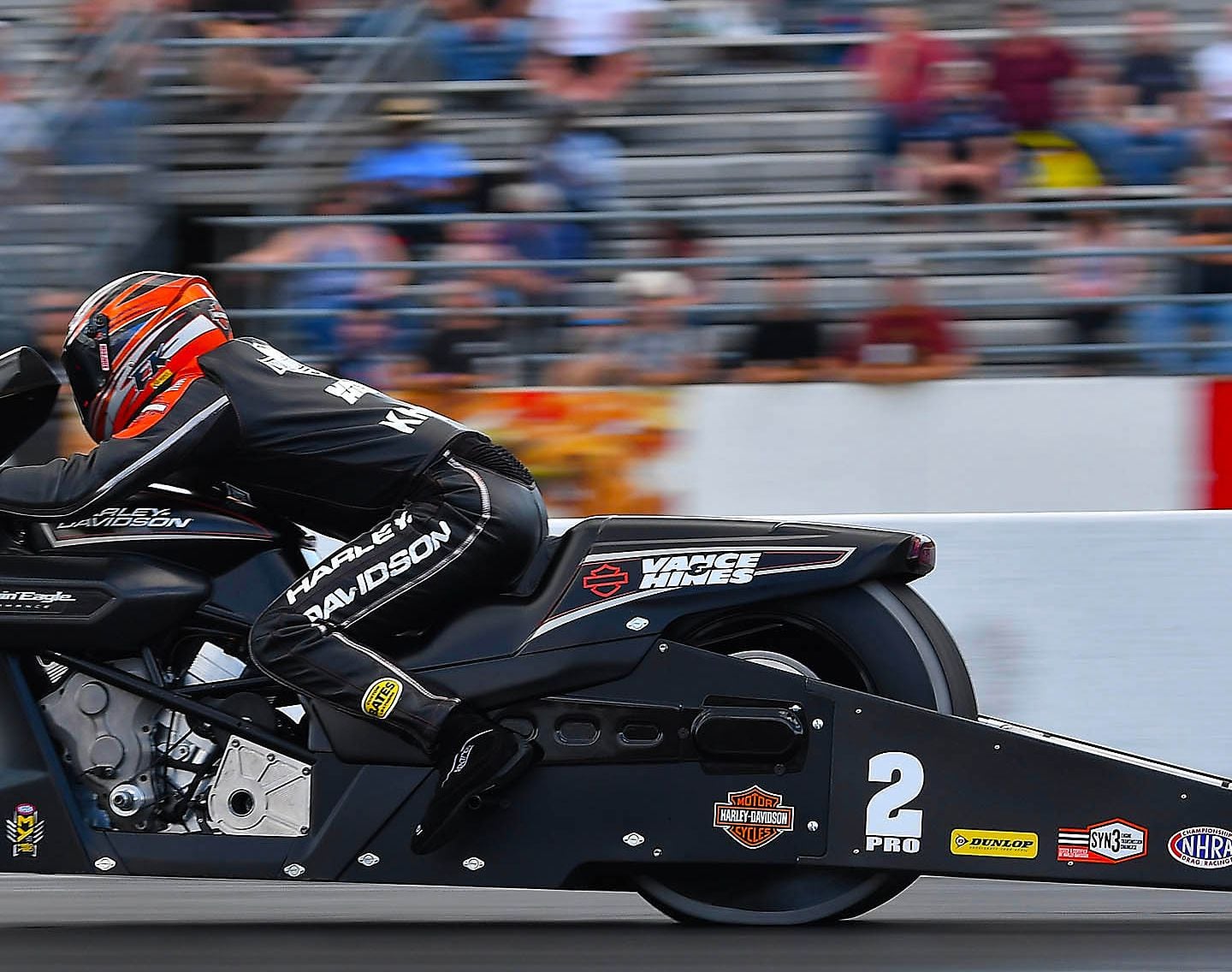



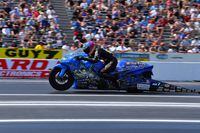
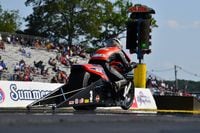
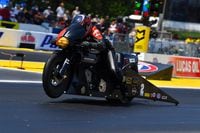


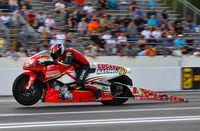

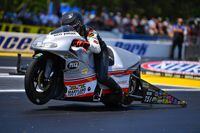



/cloudfront-us-east-1.images.arcpublishing.com/octane/MUQLOVLL2ZDGFH25ILABNBXKTI.jpg)
/cloudfront-us-east-1.images.arcpublishing.com/octane/TNOU5DNE2BC57MFPMGN2EIDXAM.jpg)
/cloudfront-us-east-1.images.arcpublishing.com/octane/GTCXACQGJ5HAPDTGWUQKDEH44E.jpg)
/cloudfront-us-east-1.images.arcpublishing.com/octane/S35YGSEMEZB4BLTDJTSZPF4GLA.jpg)
/cloudfront-us-east-1.images.arcpublishing.com/octane/5UOT6HPX2JFMRJAX6EH45AR4MQ.jpg)
/cloudfront-us-east-1.images.arcpublishing.com/octane/OKWOJWAKP5EP3OACCRRWPCIX2Q.jpg)
/cloudfront-us-east-1.images.arcpublishing.com/octane/2WF3SCE3NFBQXLDNJM7KMXA45E.jpg)
/cloudfront-us-east-1.images.arcpublishing.com/octane/G4MG6OUCJNBSHIS2MVVOTPX65E.jpg)
/cloudfront-us-east-1.images.arcpublishing.com/octane/IIGGWFOTOJGB7DB6DGBXCCMTDY.jpg)
/cloudfront-us-east-1.images.arcpublishing.com/octane/QSTCM6AVEZA5JJBUXNIQ3DSOF4.jpg)
/cloudfront-us-east-1.images.arcpublishing.com/octane/U4I7G625B5DMLF2DVIJDFZVV6M.jpg)
/cloudfront-us-east-1.images.arcpublishing.com/octane/B6XD6LS6IVCQPIU6HXDJSM3FHY.jpg)
/cloudfront-us-east-1.images.arcpublishing.com/octane/ICL63FEDDRDTTMINYICCEYGMDA.jpg)
/cloudfront-us-east-1.images.arcpublishing.com/octane/FCGZHQXRBZFLBAPC5SDIQLVF4I.jpg)
/cloudfront-us-east-1.images.arcpublishing.com/octane/WNOB6LDOIFFHJKPSVIWDYUGOPM.jpg)

/cloudfront-us-east-1.images.arcpublishing.com/octane/X33NU3E525ECRHXLNUJN2FTRKI.jpg)
/cloudfront-us-east-1.images.arcpublishing.com/octane/6KKT5NNL2JAVBOXMZYS5ZO76YA.jpg)
/cloudfront-us-east-1.images.arcpublishing.com/octane/J5RKG5O455GMPGQRF2OG6LRT7A.jpg)
/cloudfront-us-east-1.images.arcpublishing.com/octane/GX2CIZKQVRH2TATDM26KFG2DAE.jpg)
/cloudfront-us-east-1.images.arcpublishing.com/octane/ZWIDYSAKQZHD5BHREMQILXJCGM.jpg)
/cloudfront-us-east-1.images.arcpublishing.com/octane/CYUHJZCTSJCH3MRAQEIKXK7SCQ.jpg)
/cloudfront-us-east-1.images.arcpublishing.com/octane/LKOFINY56FCXJCANJ5M7ZDQUBY.jpg)
/cloudfront-us-east-1.images.arcpublishing.com/octane/4NBPDACMWJH63JQYJVK3QRBDZI.jpg)